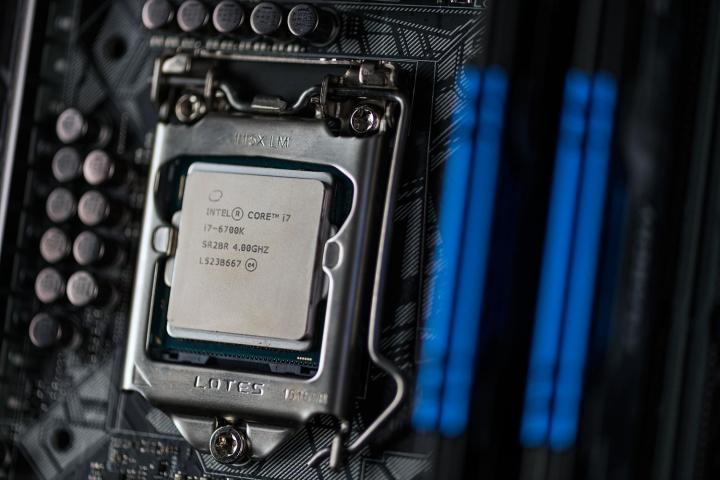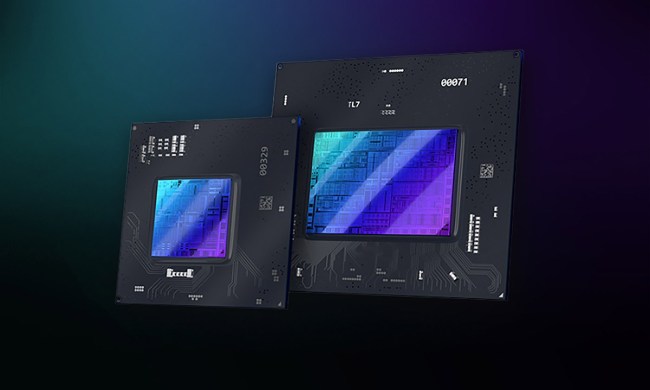
Casual performance for everyday use
| The parts | Details | Price | |
| Processor | Intel Core i7-6700K | Quad-core, 4.0GHz | $420 |
| Cooler | Cooler Master Hyper 212 Evo | $20 | |
| Motherboard | Asus Z170 Pro Gaming | ATX, LGA1151 | $163 |
| Memory | G.Skill Ripjaws V series (2 x 4GB) | DDR4-3200 | $60 |
| SSD | Kingston SSDNow 300 120GB | 2.5″ | $45 |
| HDD | Western Digital Caviar Blue 1TB | 3.5″, 7200RPM | $50 |
| Graphics | Asus GeForce GTX 950 | 2GB | $129 |
| Case | Inwin GT1 | ATX Mid tower | $60 |
| Power supply | Corsair RM 650W Full Modular | ATX, 80+ Gold | $60 |
| Total cost = | $1,007 |
Just because gaming isn’t the focus of a build, doesn’t mean it has to compromise on performance. At the heart of this mid-range rig is an Intel Core i7-6700K, a powerful Skylake quad-core with a base clock of 4.0GHz and an unlocked multiplier for serious overclocking goodness. Because the 6th Generation chips don’t include a cooler, we’ve opted for the Cooler Master Hyper 212 Evo, which is an excellent cooler available for the shockingly low price of just $20. We’re trying to keep costs low, but the Asus Z170 Pro Gaming motherboard offers excellent support for our parts, and future upgrades, at a decent price point.
8GB is the sweet spot for RAM in a typical system, and we’ve maxed out our potential performance with a pair of 4GB 3,200MHz DDR4 sticks. A bit of breathing room opens up the option for both an SSD and mechanical hard drive. Neither is particularly special, but with 120GB of SSD space, there’s plenty of room for the OS and important applications, with a 1TB data drive for storage of large files. Graphical performance isn’t the focus, but there’s room in our budget for Nvidia’s GeForce GTX 950 with 2GB of memory, a very capable card for 1080p gaming that can also be used to power up to four monitors simultaneously.
The Inwin GT1 enclosure looks slick with an aggressive aesthetic and large left-hand window. It also has plenty of drive bays for our needs, room for a dedicated GPU, and a low price. At time of this writing, Corsair is offering a fully modular, 80+ Gold rated, 650 Watt power supply for just $60. That’s a downright steal, and more than enough for our system. There’s no question it belongs in our $1,000 build.
Oculus-ready gaming PC
| The parts | Details | Price | |
| Processor | Intel Core i5-6400 | Quad-core, 2.7GHz | $190 |
| Cooler | Cooler Master Hyper 212 Evo | $20 | |
| Motherboard | Asus Z170 Pro Gaming | ATX, LGA1151 | $163 |
| Memory | G.Skill Ripjaws V series (2 x 4GB) | DDR4-2133 | $45 |
| SSD | Kingston SSDNow 300 120GB | 2.5″ | $45 |
| HDD | Western Digital Caviar Blue 1TB | 3.5″, 7200RPM | $50 |
| Graphics | MSI GeForce GTX 980 | 4GB | $440 |
| Case | Thermaltake VL80001W2Z | ATX Mid tower | $23 |
| Power supply | Corsair RM 650W Full Modular | ATX, 80+ Gold | $60 |
| Total cost = | $1,036 |
In search of more powerful gaming performance, this second build puts more money into the graphics card, which is upgraded to a GTX 980. It would’ve been nice to find a way to squeeze in a 980 Ti, but at $600 or more, it just won’t fit in the budget without serious compromises on the rest of the system. The GTX 980 is no slouch, however. It can play anything at 1080p with the settings cranked up, and it exceeds the recommended specifications for the Oculus Rift.
To afford the GTX 980 we’ve downgraded the processor to a Core i5-6400, a quad-core chip with a 2.7GHz base clock. While slower than the 6700K, it’s more than adequate for games, which rely less on processing power than GPU grunt. For memory, we’ve once again selected the G.Skill Ripjaw series in a 2x4GB setup for optimal performance, although the clock speed is scaled back from the 3,200MHz to a more reasonably-priced 2,133MHz option.
Storage is the same as the non-gaming build, with a 120GB SSD for faster loading in a few select games. It’s supplemented by a 1TB mechanical drive for media storage, and extra room for more games. The case has been changed to a Thermaltake mid-tower, with extra room for parts and cooling, despite its low price. We’ve used the same power supply, which provides more than enough wattage, and is 80+ Gold rated — can’t ask for much more than that at the price point.



